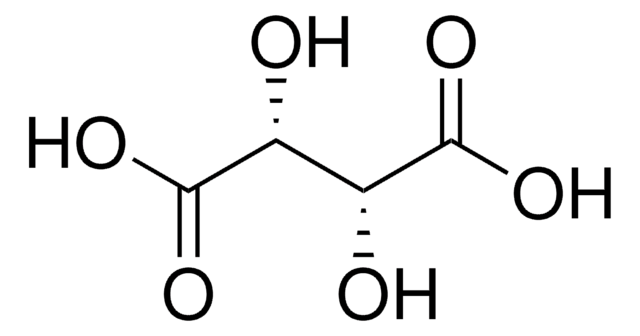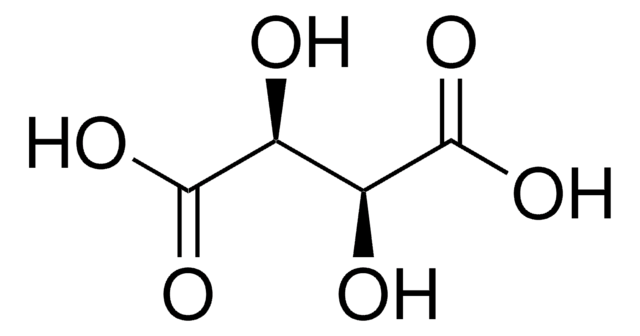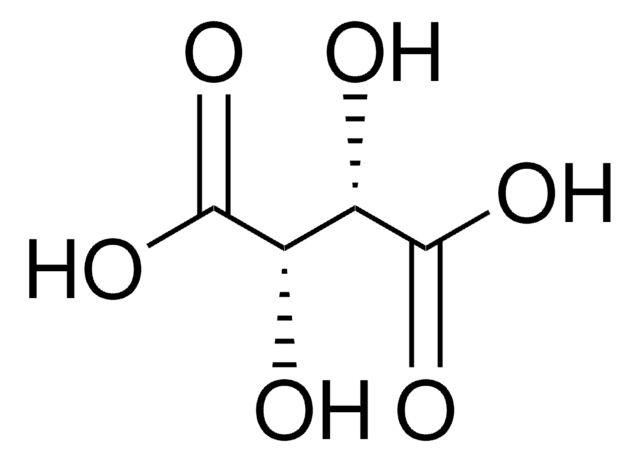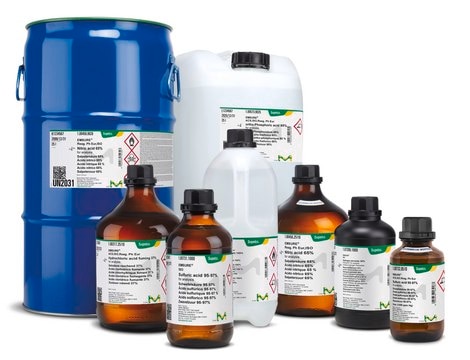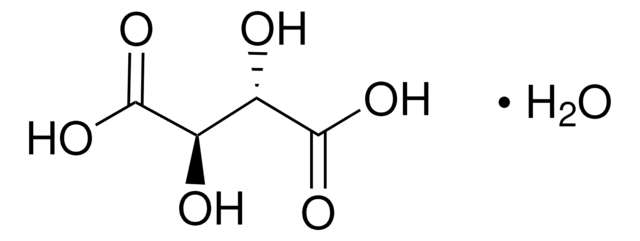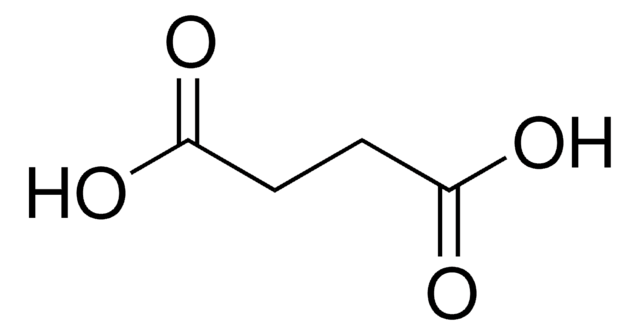T1807
L-(+)-Tartaric acid
BioXtra
Synonym(s):
(2R,3R)-(+)-Tartaric acid, L-Threaric acid
About This Item
Recommended Products
vapor density
5.18 (vs air)
Quality Level
product line
BioXtra
assay
≥98%
form
powder
autoignition temp.
797 °F
impurities
≤0.002% Phosphorus (P)
≤0.1% Insoluble matter
ign. residue
≤0.1%
mp
170-172 °C (lit.)
solubility
H2O: 1 M at 20 °C, clear, colorless
anion traces
chloride (Cl-): ≤0.05%
sulfate (SO42-): ≤0.05%
cation traces
Al: ≤0.002%
Ca: ≤0.005%
Cu: ≤0.0005%
Fe: ≤0.005%
K: ≤0.005%
Mg: ≤0.001%
NH4+: ≤0.05%
Na: ≤0.005%
Pb: ≤0.001%
Zn: ≤0.0005%
SMILES string
O[C@H]([C@@H](O)C(O)=O)C(O)=O
InChI
1S/C4H6O6/c5-1(3(7)8)2(6)4(9)10/h1-2,5-6H,(H,7,8)(H,9,10)/t1-,2-/m1/s1
InChI key
FEWJPZIEWOKRBE-JCYAYHJZSA-N
Looking for similar products? Visit Product Comparison Guide
Related Categories
General description
Application
- in filter-sterilized synthetic grape juice for feast fermentation
- in crystallization experiment
- to test the influence of stereospecific interactions between stereoisomers of tartaric acid and proteins during crystallogenesis
Biochem/physiol Actions
signalword
Danger
hcodes
Hazard Classifications
Eye Dam. 1
wgk_germany
WGK 1
flash_point_f
302.0 °F
flash_point_c
150 °C
ppe
dust mask type N95 (US), Eyeshields, Gloves
Choose from one of the most recent versions:
Certificates of Analysis (COA)
Sorry, we don't have COAs for this product available online at this time.
If you need assistance, please contact Customer Support.
Already Own This Product?
Find documentation for the products that you have recently purchased in the Document Library.
Customers Also Viewed
Our team of scientists has experience in all areas of research including Life Science, Material Science, Chemical Synthesis, Chromatography, Analytical and many others.
Contact Technical Service